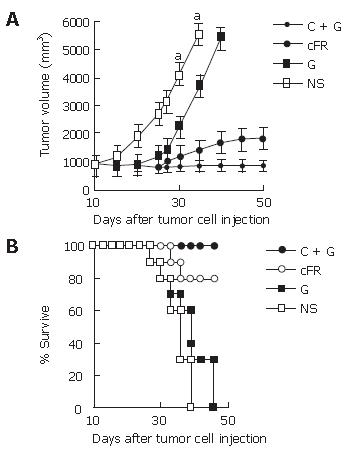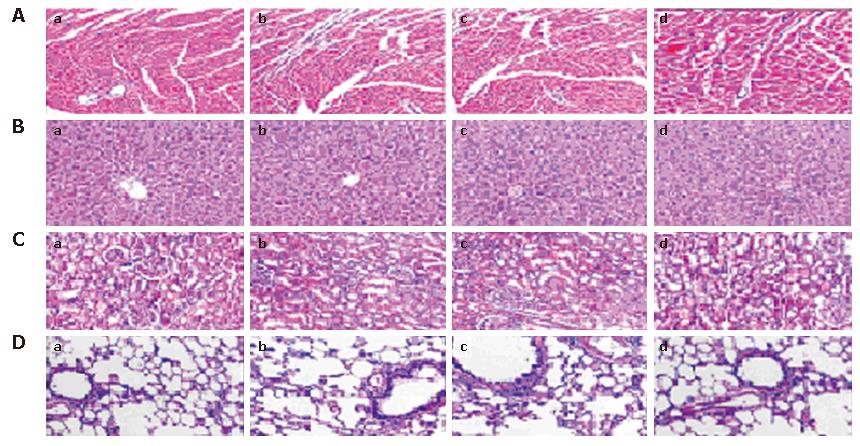Copyright
©2007 Baishideng Publishing Group Co.
World J Gastroenterol. May 7, 2007; 13(17): 2484-2489
Published online May 7, 2007. doi: 10.3748/wjg.v13.i17.2484
Published online May 7, 2007. doi: 10.3748/wjg.v13.i17.2484
Figure 1 The combination therapy inhibited tumor growth (A) and improved the survival of tumor-bearing mice (B) significantly.
aSignificant difference compared to untreated group, aP < 0.05.
Figure 2 Induction of auto-antibodies by cFR-1 vaccine alone or combination therapy as assessed by Western blot analysis.
Figure 3 The deposition of auto-antibodies on the endothelial cells by immunofluorescent staining (A-B) and the numbers of APBCs in spleens of mice by ELISPOT assay (C) in cFR-1 vaccine alone or combination therapy.
Figure 4 The combination therapy synergistic inhibition of angiogenesis (A) and proliferation (B), and induction apoptosis (C) at d 31 after tumor cell injection.
1Synergistic relationship in the combination therapy (synergistic index > 1). aP < 0.05 vs untreated group.
Figure 5 HE staining of heart (A), liver (B), kidney (C) and lung (D) in recipient mice.
No organic hemorrhage appeared in the combination therapy group and no differences were found among of C + G (a), cFR (b), G (c), and NS groups (d).
- Citation: Zheng SJ, Zheng SP, Huang FY, Jiao CL, Wu RL. Synergistic anti-tumor effect of recombinant chicken fibroblast growth factor receptor-1-mediated anti-angiogenesis and low-dose gemcitabine in a mouse colon adenocarcinoma model. World J Gastroenterol 2007; 13(17): 2484-2489
- URL: https://www.wjgnet.com/1007-9327/full/v13/i17/2484.htm
- DOI: https://dx.doi.org/10.3748/wjg.v13.i17.2484













